by Dana Courtney
I was recently blessed to preview a group of videos of bird biologists and enthusiasts interviewed by the Kauaʻi Forest Bird Recovery Project (KFBRP). KFBRP spoke with the people who knew many of our Hawaiian forest birds before they were no longer with us and with those who spent an innumerable amount of hours studying and watching and getting to know the forest and its inhabitants. One of those videos was of an interview with Jim Denny, a devoted birder and photographer of Hawaiian forest birds…and of all birds that can be found on Kauaʻi.
Jim Denny spoke about the differences in the native forest from when he first started going in to photograph the birds and the forest today. The forest he was referring to is off of the Pihea Trail that eventually winds its way into the Alakaʻi Wilderness, which is essentially home to all of the remaining native forest birds. Not only has the vegetation changed significantly due to invasive plants outcompeting native vegetation, but the sound is different. Thirty years ago it was a cacophony of sound. A chorus. The name “Pihea” itself means cacophony. Each person that was interviewed spoke of this. According to Jim, the number of birds that were there 30 years ago is “indescribable and a thing not to be forgotten”. I had more than a tinge of jealousy hit me when I heard that. Because now, well now – in Jim’s words, it’s sad and depressing to even go to those same places anymore.
Why? Because it’s gone. That sound. That cacophony. That chorus. The birds are gone from there. Jim referred to something Andrew Berger, a renowned ornithologist, said about a forest devoid of birds. “All you hear is the wind and the trees and the water dripping off of the leaves.” And Jim describes, that is how it became on Kauaʻi. Fellow bird enthusiast and recorder, David Kuhn, describes the forest as “lonely” now. Jim is noticeably sad in his interview as he ponders the change he has seen in his lifetime. “It’s sad. Sad like a funeral,” he says with tears in his eyes.
We lost ʻōʻū, ʻōʻō, kāmaʻo, and very likely, nukupuʻu. Now we focus our efforts on critically endangered ʻakikiki, ʻakekeʻe, puaiohi, and the threatened ʻiʻiwi. And despite Jim’s sadness for all those we have lost, he has hope. And there is hope.
There are ongoing efforts to prevent extinction and hopefully lead to recovered populations of all four species in addition to improving conditions for their feathered friends the ʻapapane , ʻelepaio, and ʻanianiau. We know more about avian malaria and pox and the birds who fortunately seem to have some resistance. We may have figured out an ingenious way to stop the spread of those diseased by changing the mosquito population using Wolbachia. Rats and cats are actively kept from ruining nests or killing fledglings through predator control practices. Invasive plants are being removed to make way for the native vegetation that provides food, habitat, and nesting resources to these birds. Education and outreach efforts are informing people about Rapid ʻŌhiʻa Death (ROD) and how to stop the spread. And like the ‘alala on the Big Island, three of the four species have been or are currently a part of a captive breeding program to include reintroduction.
You may be wondering how you can help these Kauaʻi birds and no matter where you live, you CAN help. Much of the loss of good habitat for the forest birds is due to a change in climate. Mosquitoes now thrive at higher elevations than they have in the past, making it difficult to impossible for birds to be out of range of the vectors of avian malaria and pox. Reduce your carbon footprint as much as possible by practicing energy conservation and the three “R’s” – reduce, reuse, recycle. The flora and fauna of the world will benefit. On Kaua’i, please keep cats indoors and empty / turn over receptacles that may hold water and create breeding habitat for mosquitoes. Decontaminate or clean shoes and gear well before and after entering new areas to prevent spread of seeds from invasive plants and Rapid ʻŌhiʻa Death. Be familiar with invasive plant species you may see overtaking an area and report them to Kauaʻi Invasive Species Committee. You can even donate your time to the various agencies leading the effort to save these birds, including Kauaʻi Forest Bird Recovery Project.
Mostly, I encourage you to learn and to care about these Hawaiian forest birds that may not be with us for long despite our best efforts. Extinction happens a little at a time but just like time passes from year to year, it can happen quickly. The native forest birds are part of a culture and a history that are also fighting to survive against many of the same types of elements – introduced populations, competition for resources, a smaller and changed habitat. Even though these birds are harder to find, harder to get to know, and may take some effort to appreciate, now is the time to know them, help them, do your part – before it’s too late.

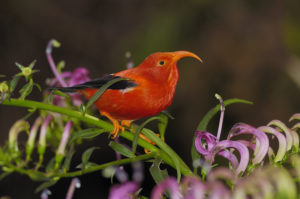
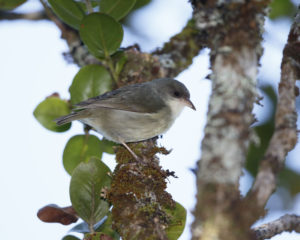
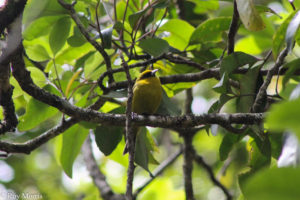
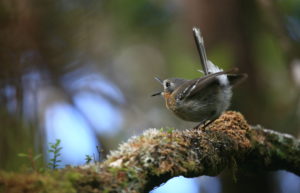
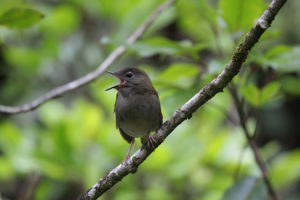
 Lucas Behnke
Lucas Behnke